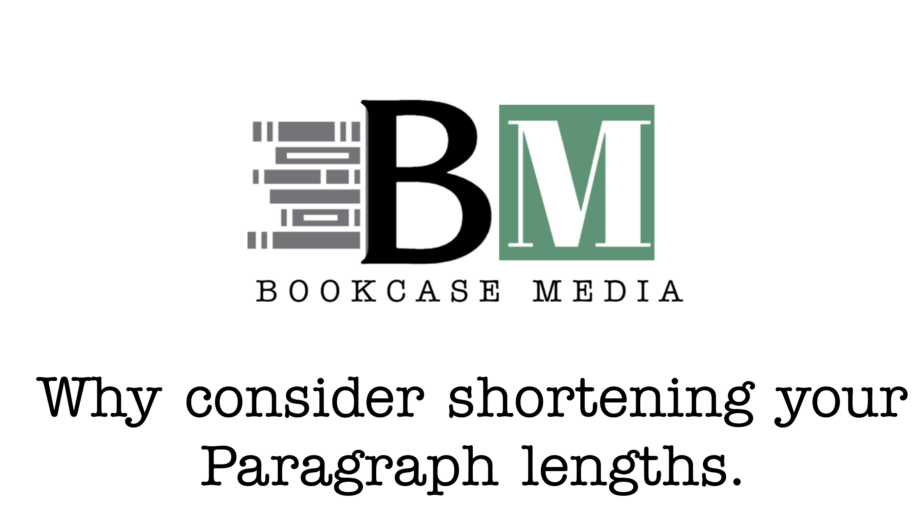The Art of Swift Reading: Embracing Shorter Paragraphs in Your Writing
In the realm of literature, the physical appearance of a book often goes unnoticed by readers engrossed in the narrative. However, the visual presentation plays a crucial role in shaping the reader’s perception of the book’s pace and overall readability. For authors, the strategic use of shorter paragraphs can be a game-changer, offering a subtle yet effective technique to create an illusion of a faster-paced read, even in the midst of a substantial 350-page tome.
Authors immersed in their craft may not always consider how the layout of their words on the page influences the reader’s experience. Crafting a book that reads effortlessly, with an appearance that suggests swiftness, is an art that can be mastered through thoughtful paragraph structuring.
One compelling reason to embrace shorter paragraphs lies in their ability to captivate the reader’s attention and maintain a dynamic flow. In a world saturated with distractions, readers appreciate content that is easily digestible. Shorter paragraphs provide breathing room, preventing readers from feeling overwhelmed and ensuring a seamless reading experience.
Beyond the psychological impact, there’s a practical aspect to shorter paragraphs that contributes to a perceived faster pace. When confronted with a page filled with dense text, readers might feel daunted by the sheer volume of words. On the contrary, shorter paragraphs create a visually inviting landscape, encouraging readers to progress through the text with a sense of accomplishment.
Consider this: a reader faced with a page filled with lengthy paragraphs may subconsciously anticipate a slower, more laborious reading experience. In contrast, strategically breaking down the content into shorter paragraphs creates a visual rhythm that keeps the reader engaged and fosters the perception of a brisk narrative.
In essence, the use of shorter paragraphs is a subtle yet powerful tool for authors seeking to enhance the readability of their work. By incorporating this technique, writers can elevate their storytelling, creating a visually appealing and mentally engaging experience for readers. So, the next time you embark on the journey of crafting a literary masterpiece, remember the impact that shorter paragraphs can have on shaping the reader’s perception of your work – a vital consideration for those who aim to master the art of swift reading.
Quick Break Down
- Increased Readability: Short paragraphs are visually less intimidating, making the text more approachable for readers. This can be particularly helpful for keeping the reader engaged and preventing them from feeling overwhelmed.
- Faster Pacing: Short paragraphs create a quicker flow as readers move from one idea to the next rapidly. This can be effective in scenes that require a sense of urgency or tension, contributing to a faster overall pace.
- Dynamic Rhythm: Varying the length of paragraphs creates a dynamic rhythm in the narrative. Short paragraphs can be used for emphasis or to deliver punchy dialogue, while longer paragraphs can slow down the pace for detailed descriptions or introspection.
- Enhanced Dialogue: Breaking up dialogue into shorter paragraphs can make conversations feel more dynamic and realistic. It allows for a natural back-and-forth rhythm, mirroring real-life exchanges.
- Emphasis on Key Points: Important information or impactful moments can be highlighted in short paragraphs, drawing attention to key points and ensuring they stand out in the reader’s mind.
- Suitable for Action Scenes: Action scenes often benefit from shorter paragraphs as they convey a sense of immediacy and keep the reader’s focus on the rapid progression of events.
- Improved Scene Transitions: Short paragraphs can aid in smooth transitions between scenes or viewpoints, helping to maintain the overall pacing and flow of the narrative.
- Reader Engagement: Short paragraphs encourage readers to keep turning the pages, creating a sense of progress and accomplishment. This can be particularly effective in maintaining engagement, especially in genres where a fast-paced narrative is crucial.
Remember that the optimal pacing depends on the specific requirements of the scene, genre, and the overall tone of your book. Balancing shorter and longer paragraphs thoughtfully can contribute to a well-paced and engaging reading experience.
